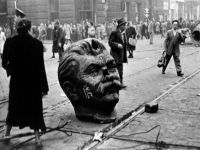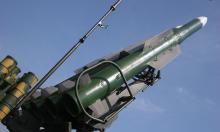Hungary wins the right to not ask questions
 THE 1956 COUNTER-REVOLUTION IN HUNGARY AND THE PRESENT-DAY ANTI-COMMUNIST PROPAGANDA
THE 1956 COUNTER-REVOLUTION IN HUNGARY AND THE PRESENT-DAY ANTI-COMMUNIST PROPAGANDA
In the years of 1989-90, a bourgeois counter-revolution took place in Hungary. Opportunist and revisionist forces inside the leadership of the former Hungarian Socialist Workers' Party (HSWP) made a bargain with capitalist circles of the USA and Germany and handed over the power to internal bourgeois counter-revolitionary forces. The Marxist wing inside the HSWP proved unable to defend the achievements of socialism. Later those who surrendered the socialism reorganised themselves into the Hungarian Socialist Party and joined the political system of capitalist Hungary. Neither can we neglect the role of the opportunist policy of the former leadership of the Soviet Union, that betrayed socialism.
The bourgeois forces which gained power in 1990 consider 1956 their historical ideal. On this ideal is based the whole political and ideological system of capitalist Hungary. It also constitutes the main means of the present-day anti-communist propaganda.
DIRECTIONS OF ANTI-COMMUNIST PROPAGANDA
The modern Hungarian bourgeois elite regards the events of the 1956 as "revolution and war of independence." The main aim of the anti-communist propaganda is to make people accept such an interpretation of 1956. The term revolution also means to them that everything that was done in the socialist Hungary during the period from 1948 to 1956 is unacceptable and should to be thrown away.
The "war for independence" in bourgeois interpretation means that Hungarian people carried out a heroic struggle against the Soviet Union and - as the present-day memorial plaques run - "here in Budapest heroic Hungarian patriots won a victory over the most powerful army of the world".
According to the argumentation of capitalist propaganda, the Soviet troops began military operations against Hungary without declaration of war. There were 2,652 Hungarian citizens killed in battle and a "heroic struggle for independence which lasted many days, suffering defeat as the country was left alone in the fight against a much more powerful enemy."
One of the main tendencies of the anti-communist propaganda is an attempt to prove that communism was alien to the nature of the Hungarian people and that the socialist period could come only because it was imposed upon Hungary from outside.
From the above follows one of the most widespread directions of the anti-communist attack - they try to prove that in the 1956-58 years, the "communist regime" implemented savage reprisals against "heroes of the revolution and the war for independence" and even against ordinary Hungarian people. According to the propaganda, 400 people were executed, 21,668 were sentenced to imprisonment, 16-18,000 were interned for participating in the revolution. Actually there can be no doubt that it was a counter-revolution aimed against socialism.
In October 1956, counter-revolutionary forces in Hungary started attacks on a young socialist state with the support of international imperialism. The aim was to overthrow the socialist system and restore the bourgeois system which existed before 1945. Counter-revolutionary forces took advantage of the misconceptions and errors made by the ruling Hungarian Working People's Party with Mátyás Rákosi at its head in the period from 1948 to 1956.
In 1985, János Kádár, who after 1956 led the party of Hungarian communists for 32 years, at the meeting with the then general secretary of the CPSU Central Committee, Mikhail Gorbachev, spoke about the lessons of Hungarian history: "The revealing of errors was not followed by their correction, and such a deep social crisis was formed that gradually turned into a counter-revolution." The counter-revolution forces also had taken advantage of the situation in the communist party of the Soviet Union when, after the death of Stalin, Khrushchev came to power. Khrushchevite "denunciations" played into the hands of the anti-communist propaganda and instigation against Soviet Union.
It is also beyond doubt that the majority of Hungarian people nevertheless didn't want the restoration of the capitalist past. They didn't want the return of the regime which, from 1920 to 1945, was marked by the name of Miklós Horthy and which brought Hungary to the ravages of the WWII and Fascism. In spite of the difficulties, problems and errors of socialist construction, the people preferred the socialist society.
In November 1956, the Soviet Union hastened to defend Hungarian socialism. It prevented the United States and other imperialist countries from military intervention into Hungarian events and, at the same time, allowed the suppression of the armed resistance of counter-revolutionary forces.
On 4 November 1956, the Hungarian Revolutionary Worker-Peasant Government was formed with János Kádár at its head. The Kádár-led government treated those whose activity was directed against state order according to the laws of the People's Republic of Hungary.
It is also a historical fact that after 1956, a new period of socialist construction in Hungary started which made possible the considerable fast development of Hungarian industry and agriculture, and marked improvement of living standards, free health care and education and general provision of pensions. Today's Hungary is still living at the expense of resources accumulated in the years of socialism.
BOURGEOIS INTERPRETATION OF 1956
The first act of the bourgeois forces, that came to power in the spring of 1990, was to legally secure the bourgeois interpretation of the 1956 events. The Act XXVIII of 1990 says, that in 1956 there was "revolution and war for independence". A combination of these two expressions itself is aimed to manipulate people, as it uses the terms which early were applied only in regard to the Hungarian revolution and war of independence of 1848-49. The events of 1848-49 for all of the Hungarian nation mean the same and everybody considers its anniversary a National Day.
The Act of 1990 declares political and spiritual continuity of 1948, 1956 and 1989. "These glorious events of the latest Hungarian history can be compared only to the revolution and war for independence of 1948-49. The Hungarian revolution in autumn of 1956 laid the foundation for hopes that it is possible to establish a democratic social system and no sacrifice is in vain for the sake of the independence of homeland.
The reprisal, which followed the revolution, though it restored the former regime, was unable to extirpate the spirit of 1956 from the soul of Hungarian people. The Parliament declares, that according to the spirit of 1956, it will do everything in the interests of multi-party democracy, human rights and national independence».
As a matter of fact, this law orders what one should think about 1956. Obviously this law is directed against socialism, against communist forces. At the same time, from the very beginning they are also using another method - anti-Sovietism.
From this time on, the Soviet Union is represented as oppressor, exploiter and dictator. This approach is secured by the Act XVII of 2001 "On the significance of restoring independence and on the Day of Hungarian Independence."
The Act says: "On 19 March of 1944, our country was occupied by Germany, and as a result of that, our homeland had been suffering the horrors of war and national-socialist and nihilist rule. And though the victory of the allied powers brought an end to the German occupation and the dictatorship supported by it, the German occupation was changed by the Soviet one and under the cover of the Soviet arms, it was made possible to establish communist dictatorship, four decades of which also brought immense suffering and damage. The influence of the 1956 revolution and war for independence contributed to the circumstances when the latest turn of our history once again gave to our nation precious freedom and our country restored its sovereignty. On June 19, 1991 the last Soviet soldier left the territory of Republic of Hungary, and now the nation is the master of its fate, independent from every alien force and without any restriction."
Hungarian bourgeois parties, Fidesz (Alliance of Young Democrats) and MSZP (Hungarian Socialist Party) are united in regard to estimation of the place of 1956 in the history of Hungary, both parties consider the counter-revolution of 1989-90 as a direct sequel to 1956, and thus declare a historical continuity. Both political forces insist that communism and fascism means the same and one must struggle against both. Their opinions agree upon the role of Soviet Union as occupant and dictator. They also fully agree, that such an approach should dominate in education, mass propaganda and mass media.
There are, nevertheless, significant differences too. MSZP underlines the role of Imre Nagy in the 1956 events and considers those events as the beginning of "democratic socialism," which the MSZP is still representing today. As is generally known, Imre Nagy after the death of Stalin in June of 1953, was made the prime-minister of Hungary on the recommendation of the Communist Party of the Soviet Union.
In 1956 Nagy-led government decided to establish a bourgeois multi-party system, to leave the Warsaw Treaty, and to form National Guards - the armed forces of counter-revolution. In 1958, Imre Nagy was sentenced to death and executed.
The MSZP while in government made this aspect the centre of anti-communist propaganda. Imre Nagy was presented as a positive figure of democratic socialism. At the same time, Janos Kadar was described as a politician who served the interests of Soviet Union and carried on a "soft" dictatorship.
They tried to wipe out his memory from the national consciousness. The shameful part of this process was the desecration of Kadar's grave. It took place in the years of the MSZP government. The grave of Kadar was opened and part of his remains were stolen. The authorities closed the investigation in surprisingly short time.
Another bourgeois party, Fidesz, on the contrary does not acknowledge democratic socialism, does not acknowledge Imre Nagy and considers acceptable only the ideas of bourgeois restoration, bourgeois counter-revolution.
THE LAW AT THE SERVICE OF ANTI-COMMUNISM
Bourgeois power, in the struggle against communist forces, uses a number of juridical measures. In 1993, Parliament modified thefirst paragraph of the 269/B Section of Criminal Code, according to which "Whomever a) distributes; b) uses very openly; c) exhibits in public theswastika, SS symbol, arrow cross, hammer and sickle, five-armed red star or representational symbols and does not commit any greater crime, will be charged and fined."
This law was the example for other countries, and despite of all protests, it is still in force. It secures legal justification for a propaganda war against communist symbols.
In 2000, the celebration of the "Memorial day for victims of communist dictatorships" was established. The The Parliament accepted the resolution number 58/2000 (VI.16), according to which every year on February 25, in all secondary schools of Hungary, should be celebrated the Memorial day for victims of communism to commemorate that on this day in 1947 Bela Kovacs, the general secretary of the Independent Smallholders' Party, was arrested and transported to the Soviet Union. As a matter of fact, this decision brought anti-communist propaganda into schools.
Fidesz, which came to power in April 2010, among the most urgent measures amended the Section 269/C of the Criminal Code as follows: "Denial in public of the crimes of national socialist and communist systems. Whomever before great publicity denies, doubts or presents as negligible the fact of the genocide and other crimes against humanity, committed by national-socialist and communist systems, commits a misdemeanour and it shall be punishable with imprisonment of up to three years."
The new law is one of the most effective instruments of anti-communist propaganda, as from the very beginning it excludes any legal possibility for discussion and presentation of contrary opinions. Thus, the historical place of 1956 is not and cannot be the subject of public debates or contrary opinions. Only works which conform to the official interpretation can be published.
The bourgeois political elite, nevertheless, understands that juridical measures only are not enough to change the consciousness of the masses. In reality, juridical bans affect older generations, whose own life experience induces them to see 1956 differently from the official policy. By contrast, younger generations are seeking new answers. They use more profound, scientific and modern means of propaganda
SCIENCE AT THE SERVICE OF ANTI-COMMUNIST PROPAGANDA
During the last twenty years, great efforts were made and serious money was spent to create scientific research institutes serving the aims of anti-communist propaganda.
One of the first was the Documentation and Research Institute for the History of the 1956 Hungarian Revolution (the 1956 Institute), which was founded already in summer of 1989, and which has received substantial material and professional support. Up to now, this institute is the centre of research work, connected with 1956. Besides numerous other publications, they published on the Internet 1,200 pages of period documents on the 1956 counter-revolution. Most of it was published for the first time
An institute named Historical Archives of State Security Services was created, whose direct task was to publish documents of the internal political intelligence service from 1957 up to 1989, with special attention being paid to the lists of the state security officers and recruited agents. Based on the data of these archives, hundreds of publications have appeared, trying to "denounce" communist dictatorship and events of the period after 1956. The aim was to prove that all those who cooperated with the socialist system were either traitors or agents.
In the last years, especially in connection with the 50th anniversary of the 1956 events, the most well-known Hungarian libraries were attached to the anti-communist propaganda. For example, today you can find even on the Internet the leaflet and poster funds of the National Library, that is the National Széchényi Library and the Budapest Ervin Szabo Library.
Helped by the Hungarian government, Hungarian research institutes are developing effective cooperation with archives of the Russian Federation. As a result, they have brought numerous old soviet documents, up until today unpublished, that allegedly denounce communist forces, saying that Kadar was trained by Russians and served only the Soviet superpower interests against the interests of Hungarian people.
FILMS AND BOOKS ON THE COUNTER-REVOLUTION
In the last years, documents were published from the counter-revolution, memoirs of those who took part in it, materials connected with foreign countries. Up to 2010, about 400 books on 1956 were published and 100 conferences were held.
In 2002, a "museum" named the House of Terror was opened in Budapest. (https://www.terrorhaza.hu).
Its aim - with the help of the most modern means, is to make people believe that the communist dictatorship and the fascist dictatorship are one and the same and more than that - that communist is even worse. In 2009, in provincial town of Hodmezõvásárhely, the local division of the House of Terror was opened. They plan to open new local divisions.
An important part is assigned to films. Twenty (20) full-length documentary films were released on 1956.Authentic documents were used in those films, and the latest manipulative technologies.
They have made an art out of the handling of 1956 in the bourgeois spirit. In 2006, the motion picture "Freedom, love" was released. It was directed by one of the best contemporary Hungarian filmmakers, Krisztina Goda, who studied in England and USA. The state financed the producing of 15 more motion pictures on the different aspects of the 1956 events.
COUNTER-PROPAGANDA OF THE HUNGARIAN COMMUNIST WORKERS' PARTY
The position of the HCWP on the events in 1956 is clear and straightforward. In the opinion of HCWP, in 1956 there was a counter-revolution regardless of the intentions of those who took part in it and a complexity of events. This estimation is not new. In the Hungarian communist movement, this viewpoint is generally accepted about 1956.
The Hungarian Communist Workers' Party organised a scientific conference on the 1956 counter-revolution. In 2006, the party Central Committee formulated the political position of the party.
HCWP, in principle, is guided by the assessment made by the HSWP in 1957, according to which the counter-revolution was caused by four factors: first, dogmatism and errors of the leadership with Rakosi at its head made in the cause of socialist construction; second, treachery of the revisionist wing, united around Imre Nagy; third, activity of international imperialism; fourth, conspiracy of internal counter-revolutionary forces.
HWCP revised the role of the Soviet Union and the CPSU. It underlined that the Soviet leadership bore direct responsibility for Imre Nagy's accession to power. It was the result of Khrushchevite revisionism, which later had led to serious problems in the Soviet Union and in the international communist movement.
That is how the HWCP defines the connection between the 1956 events and the events of 1989. In the history of Hungarian communist movement, the HCWP was the first to say that the leadership of the Hungarian Socialist Workers' Party and personally, Janos Kadar, was responsible for neglecting class struggle, for compromises with international bourgeoisie and internal opposition, which later led to collapse of the socialist system.
The HCWP thinks that another error of the former HSWP was its excessive accommodation to the wishes of the CPSU, its efforts to act the way Moscow wished, its neglecting the experiences of socialist construction in China, Yugoslavia, Cuba, Vietnam, and also the conclusions of the international communist movement.
In our struggle against anti-communist propaganda connected with the events of the 1956, we also come across many difficulties. Arguments of the HCWP are based mainly on books and articles published in the period of socialism according to the standards and traditions of those times. Today it is already not enough, and these materials are not always appropriate.
We need to analyse facts and documents of 1956 from the Marxist position. In this work, significant help means the fact that the documents of the HSWP from the period of 1956-1989 from the State Archives are published on the Internet . (https://www.digitarchiv.hu).
The HCWP put into electronic form and published on thr Internet 900 Marxist works, which now are already accessible. These works were met with great interest. (https://sala.uw.hu). We are gradually developing this site.
For the HCWP, it is also difficult in its counter-propaganda work to overcome those clichés and prejudices of thinking which had been formed during the period of socialism and are still remaining among older members of the party. Neither is it easy to work with younger generations, already gone through bourgeois "brainwashing" and gradually being the target of anti-communist propaganda.
The fact that we practically have no access to the documents published in other countries hinders our work too. We have no possibility to research and interprete those documents.
The cooperation of Communist and workers' parties could play an important role in the struggle against anti-Communist propaganda on 1956. It would be expedient to organise professional and political exchanges of opinions about 1956 and its interpretation. We regard the discussion about socialism initiated by the Communist Party of Greece as example of such work.
It would be important to research early and late documents of fraternal parties, in some way connected with 1956. It would be a great help if fraternal parties could keep up with documents published in their countries, particularly important would be the help of comrades from Russia, China, Germany and Great Britain.
We step forward in our struggle against anti-Communist propaganda if we could by the 55th anniversary of the events, by autumn of 2011, compile a joint research collection. It would be still better to publish a general collection of documents and up-to-date Marxist comments by the 60th anniversary, in 2016.
Prepared for publication by:
Lisa Karpova
Pravda.Ru
Subscribe to Pravda.Ru Telegram channel, Facebook, RSS!




